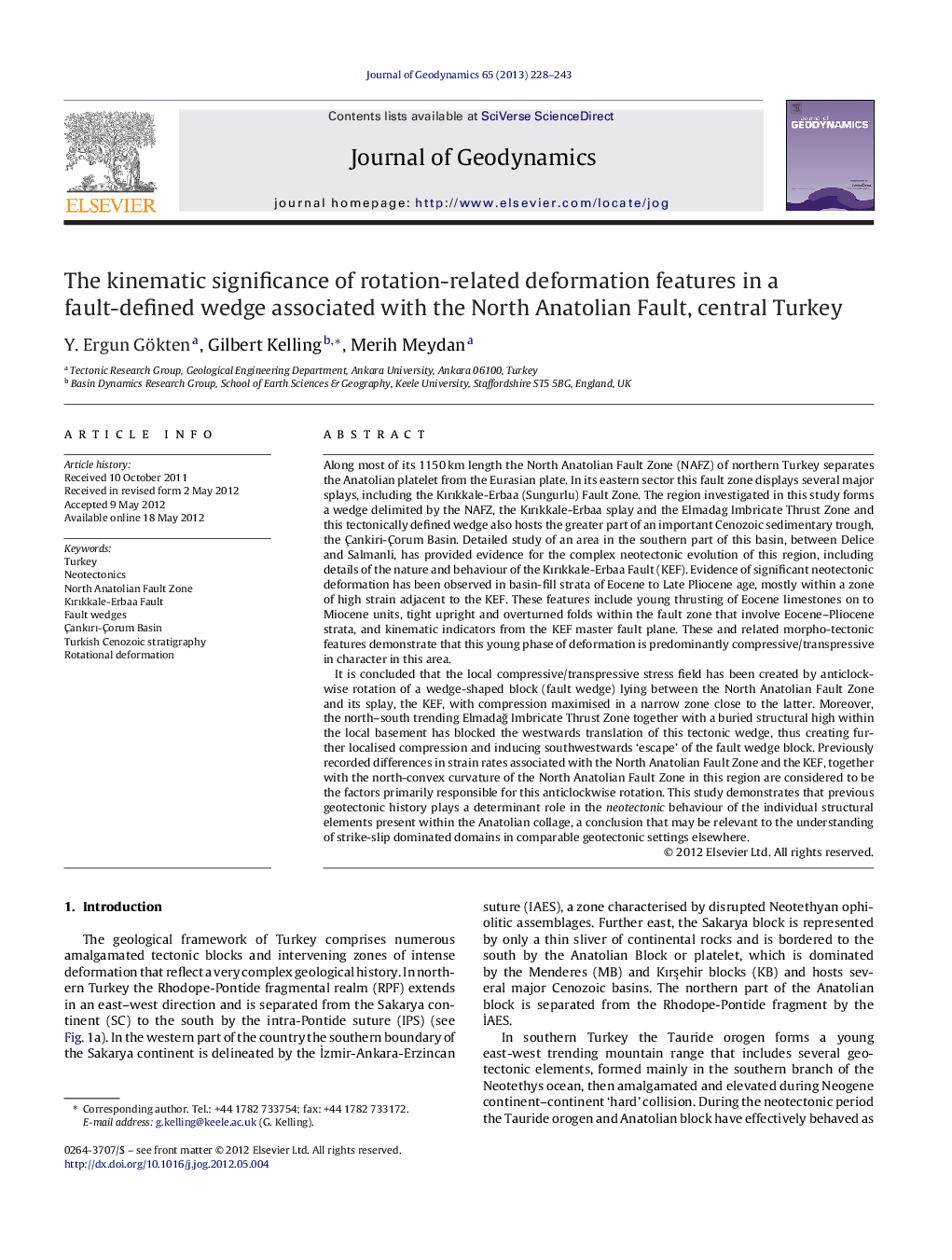| کد مقاله | کد نشریه | سال انتشار | مقاله انگلیسی | نسخه تمام متن |
|---|---|---|---|---|
| 4688256 | 1635784 | 2013 | 16 صفحه PDF | دانلود رایگان |
Along most of its 1150 km length the North Anatolian Fault Zone (NAFZ) of northern Turkey separates the Anatolian platelet from the Eurasian plate. In its eastern sector this fault zone displays several major splays, including the Kırıkkale-Erbaa (Sungurlu) Fault Zone. The region investigated in this study forms a wedge delimited by the NAFZ, the Kırıkkale-Erbaa splay and the Elmadag Imbricate Thrust Zone and this tectonically defined wedge also hosts the greater part of an important Cenozoic sedimentary trough, the Çankiri-Çorum Basin. Detailed study of an area in the southern part of this basin, between Delice and Salmanli, has provided evidence for the complex neotectonic evolution of this region, including details of the nature and behaviour of the Kırıkkale-Erbaa Fault (KEF). Evidence of significant neotectonic deformation has been observed in basin-fill strata of Eocene to Late Pliocene age, mostly within a zone of high strain adjacent to the KEF. These features include young thrusting of Eocene limestones on to Miocene units, tight upright and overturned folds within the fault zone that involve Eocene–Pliocene strata, and kinematic indicators from the KEF master fault plane. These and related morpho-tectonic features demonstrate that this young phase of deformation is predominantly compressive/transpressive in character in this area.It is concluded that the local compressive/transpressive stress field has been created by anticlockwise rotation of a wedge-shaped block (fault wedge) lying between the North Anatolian Fault Zone and its splay, the KEF, with compression maximised in a narrow zone close to the latter. Moreover, the north–south trending Elmadağ Imbricate Thrust Zone together with a buried structural high within the local basement has blocked the westwards translation of this tectonic wedge, thus creating further localised compression and inducing southwestwards ‘escape’ of the fault wedge block. Previously recorded differences in strain rates associated with the North Anatolian Fault Zone and the KEF, together with the north-convex curvature of the North Anatolian Fault Zone in this region are considered to be the factors primarily responsible for this anticlockwise rotation. This study demonstrates that previous geotectonic history plays a determinant role in the neotectonic behaviour of the individual structural elements present within the Anatolian collage, a conclusion that may be relevant to the understanding of strike-slip dominated domains in comparable geotectonic settings elsewhere.
► New geological data from SW part of the Çankiri-Çorum fault wedge are presented.
► Neotectonic Kırıkkale-Erbaa Fault (KEF) is dominated by right-lateral shear.
► In this area the KEF also displays steep thrusting and left-lateral shearing.
► SW termination of KEF is constrained by Elmadag Imbricate Thrust and buried Kirsehir Block.
► Our evidence accords with Plio-Quaternary anticlockwise rotation of Anatolia.
Journal: Journal of Geodynamics - Volume 65, April 2013, Pages 228–243
